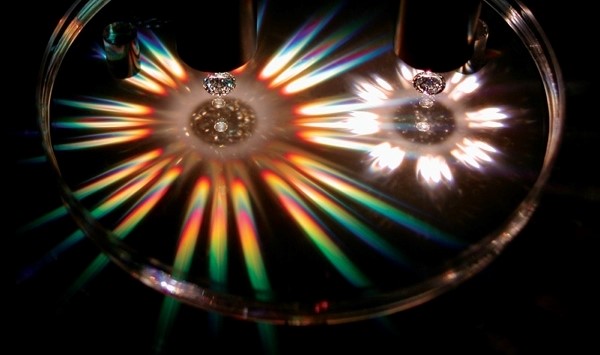MOISSANITE
Moissanite is a rare mineral of meteoritic origin, has chemical formula SiC and is in fact also called silicon carbide, from the two atoms that make up this beautiful polymorphic crystal.
Unfortunately, a fragment large enough to be faceted has never been found, so when we talk about moissanite we inevitably refer to the synthetic mineral. The first fragment was discovered by Henri Moissan, after whom the mineral is named, while examining rock samples from a meteor crater located in Diablo Canyon, Arizona, in 1893.
At first, given the small amount of sample and its striking resemblance to diamond, he misidentified it as the latter.
After the discovery of a second sample, this time larger, in 1904 he identified the crystals as silicon carbide.In fact, moissanite has gemological characteristics very similar to those of diamond, below we compare them:
Analyzing the characteristics of moissanite, it is possible to note that its hardness is second only to diamond, with a strength superior.
The 'refractive index is not much higher than that of diamond, while the specific gravity slightly lower.
In addition, moissanite exhibits significant birefringence.

Birefringence is responsible for the phenomenon of double refraction whereby a ray of light, when it impinges on a birefringent material, is split by polarization into two rays that take slightly different paths.
Birefringence is the optical property of a material having a refractive index that depends on the polarization and direction of light propagation.
It is often quantified as the maximum difference between the refractive indices exhibited by the material.
This effect was first described by the Danish scientist Rasmus Bartholin in 1669, who observed it in calcite , a crystal with one of the strongest birefringences.
